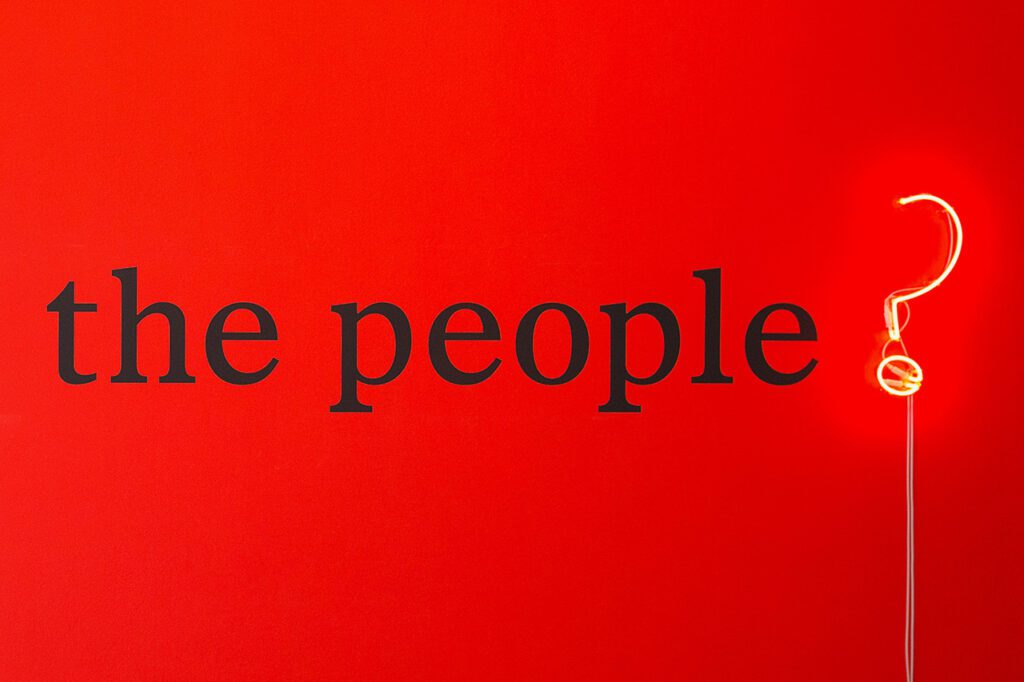Kunstverein in Hamburg, Hamburg, Germany
26 Jun 2020 - 19 Jul 2020

The Kunstverein in Hamburg presents the winners of the Villa Romana Prize to a wide audience in the exhibition series #UNFINISHEDTRACES. The Villa Romana Prize is Germany’s oldest art prize and has been awarded to four artists every year since 1905. Artists Jeewi Lee, Christophe Ndabananiye, Lerato Shadi, and Viron Erol Vert were the 2018 Villa Romana Prize winners selected by Nasan Tur (artist) and Bonaventure Soh Bejeng Ndikung (director of SAVVY Contemporary, Berlin).
With #UNFINISHEDTRACES, the artists themselves have provided the title for the series. It refers to shared qualities in their works, which each pursue the search for traces in different ways; memories, untold (hi)stories, the artist’s personal biography, and the attempt to experience what is absent are focal points in the content of each project. The title’s reference to what is left unfinished opens up a field of tension between the future and the past. Every exhibition is the realization of a possibility – ambiguity, permeability, and mobility play a large role here, both on the side of the institution as well as on the side of the artists. An experiment emerges that points beyond the specific projects. Supplemented by an online program, a multifaceted dialogue will develop over three months.
Lerato Shadi – Batho Ba Me
Lerato Shadi explores western perceptions of history, making the invisible and overlooked visible in her work. Her practice focuses on body politics, with particularly reference to experiences inscribed in the body. In drawings, performances, films, and installations, she addresses institutional violence, patriarchal and colonial strategies of exclusion or forgetting, and resistant, subjective storytelling.
The title of the exhibition, Batho ba me, is a Setswana commonplace specifically used as an appeal in political speeches that can be translated as “my people.” For a number of years, Shadi has often used Setswana in naming exhibitions and works. With the choice of language alone, she poses questions about inclusion and exclusion: who is being addressed and how, and who is not? Today, Setswana is one of South Africa’s eleven official languages and is spoken by nearly 10% of the population. During apartheid, it was one of the country’s repressed languages.
The installation providing the exhibition’s title shows the text “We the people” in black font on a red background. This expression is found in preambles of constitutions around the world. With two neon elements, Shadi sharpens these words into a question targeted directly at the viewer: “Are we the people?” For whom is the “we” claimed here actually a reality and how is this “we” defined? Shadi is referencing an essential discrepancy between inclusion and exclusion that always arises when communities are formed. “We” is especially used in political discourses in order to claim a feeling of community that must always be critically questioned. Debates about the access to human and civil rights show repeatedly that the question about “we” is always problematic. In the exhibition as well, the question being articulated about belonging is different for every viewer since it is closely connected to everyone’s personal background.
Doubt about supposedly universal assumptions is central to much of Shadi’s work, which she emphasizes through subjective readings of her art. In this context, four oversized photographs of raised fists are also on display. The position of the thumb as well as the variety of associated levels of meaning is different in each photograph. Depending on the viewer’s own prior knowledge and background, they may evoke a simple gesture of good luck, sexual innuendo, or the childhood game of stealing a nose. The most well-known gesture may be the fist with the thumb over closed fingers. Among other things, it is a symbol for the international union Industrial Workers of the World, the women’s rights movements, and the Black Power movement as well as some right-wing extremist groups. The work’s title, I know what a closed fist means, contradicts the sheer endless possibilities for interpreting the individually raised fists. It is hardly possible to claim to know precisely what a closed fist means. Shadi makes it clear that knowledge and experience are always connected to one’s own perspective and cannot be easily generalized.
The sound piece Mabogo Dinku also deals with the same subject. Shadi sings a song in Setswana without offering a translation. The title is the first half of a well-known proverb which anyone who knows it would immediately connect with the whole. Shadi consciously avoids any explanation in order to underline the repression of the history of indigenous peoples in South Africa. They have been effaced from official, written history through colonization and apartheid. Oral storytelling in the repressed, indigenous language offered a possibility of resistance against these politics. As a result of this and other ephemeral and coded moments of passing on traditions, the history of South Africa is today fragmented and full of holes. By communicating with her visitors in a language understood by very few people, the artist emphasizes the hurdles to accessing specifically situated forms of knowledge and experience that cannot be easily translated. For Shadi, a feeling of helplessness and incomprehension amongst audience members is an invitation to determine one’s own subjectivity and perspective. The artist sees acceptance of one’s limited, individual point of view as the key to a multifaceted togetherness and mutual understanding.
Lerato Shadi (born in Mahikeng, South Africa, lives and works in Berlin) studied art at the University of Johannesburg and earned a M.A. in Spatial Strategies at the Kunsthochschule Berlin-Weißensee. Her work has been shown internationally in solo and group exhibitions, a. o.: Musée d’Art Moderne de Paris (December, 2020); 14th Curitiba Biennial in Brazil, SAVVY Contemporary, Berlin (both 2019); Kunsthal Amersfoort in Holland, Zeitz Museum of Contemporary Art Africa in Cape Town (both 2018); as well as in the program The Parliament of Bodies at documenta 14 in Kassel, Germany (2017).